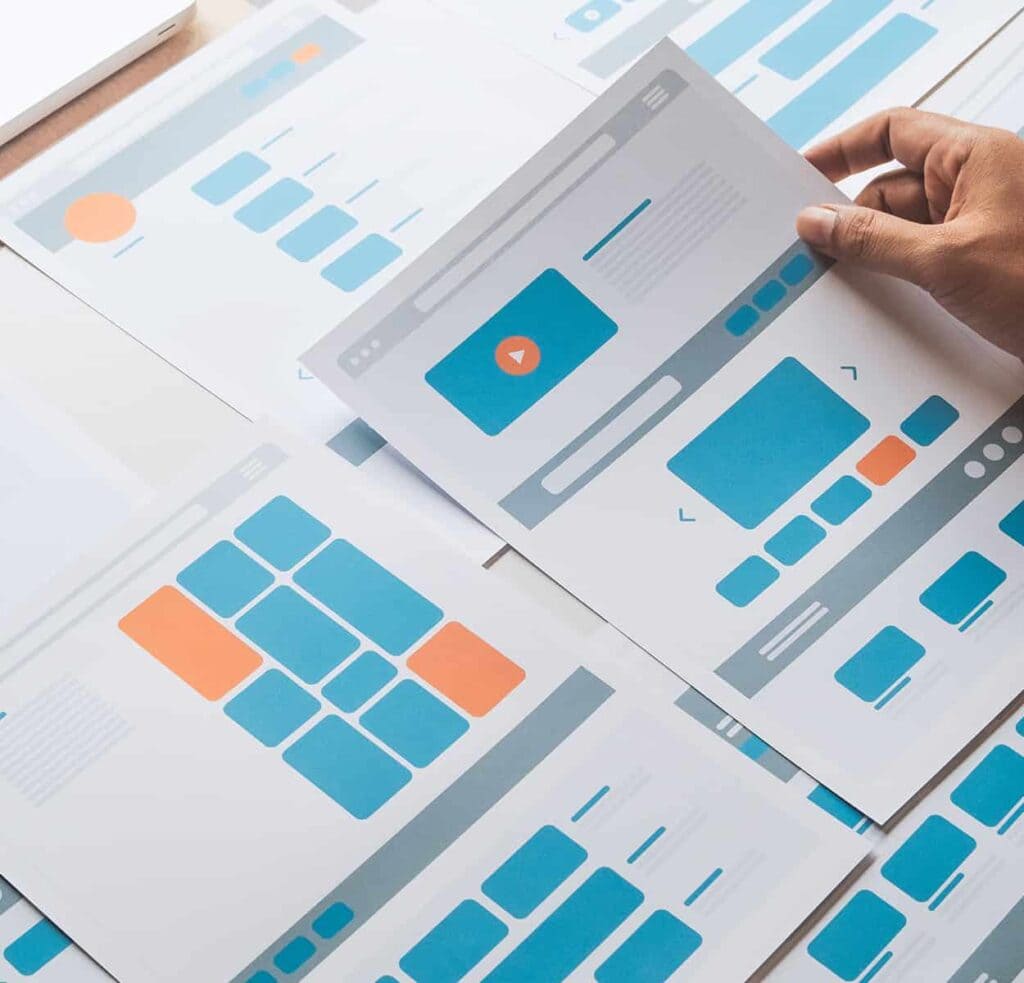Usability can improve customer experience
Do your customers flock to your site or bounce right off? Do your users easily navigate action steps or get stuck in your sales funnel? A positive first impression sets you up for continued customer interaction.
88%
of online shoppers won’t return to a website after a bad user experience.
Small Biz Genius
75%
of a website’s credibility is judged purely on its aesthetics.
Small Biz Genius
73%
of Americans are likely to abandon a brand after just one poor customer service experience.
TCN Consumer Survey
Smart and sleek UX (User Experience Design) and UI (User Interface Design) can make the difference between a smile or a frown. And while these “U’s” sound similar—they have distinct, yet related, purposes. Think of UX as what your users actually do and UI as the visual design of a website, product or service.
a simplistic analogy
UX can be described as making a cake. The recipe and sequential steps must be created and followed to ensure a perfectly moist dessert.
UI can be described as adding the icing or decoration and the display of said cake. The tools needed to cut the cake or eat the cake might also come into play.
While both have the customer at the center of their purposes, their emphases are unique. Yet, both contribute greatly to the satisfaction of the user—and determine whether the cake will be eaten or disregarded.

Tools for seamless customer experiences
Flawless experiences require understanding your customers’ perspectives. What struggles do they encounter? How do they view their interactions with your team or business? At Blue Door Consulting, we use a wide array of tools to help improve your customers’ experiences.
Market research
Solid quantitative and qualitative data provide key insights to your industry landscape and customer trends. Research reveals data what’s needed to choose the right combination of UX and UI tools for a stronger customer experience.
Persona development
Integrate customer perspectives into all new initiatives by identifying, segmenting and visualizing key customer profiles. This tool helps personalize all UX efforts to audience needs and behaviors.
Empathy mapping
Do you know how your customers feel about your product, service or experience? Understanding their point of view using empathy maps gives your team insight into how audience members might respond to process/product changes and enhancements.
Journey mapping
Create a shared understanding of the expected versus actual customer experience. When your entire team can visualize the step-by-step journey a customer takes, process improvements can be made and personalization can be added for targeting specific customer audiences.
Service design
Considering adding a new service or product offering? How will the offering look, feel and sound? Together with your team, we’ll use human-centered design principals and customer and market insights to ensure customer needs are met with a usable interface and pleasurable experience.
Prototyping
Curious about the potential success of a new concept? Using prototyping, we can test early-stage products, services and even interfaces to gauge user reception and refine the finished product.
WireFrames
UX, UI designers and the entire project team can benefit from wireframes or page “blueprints.” Wireframes draw on the information architecture to provide a visual skeleton of each page or screen within a digital initiative.
Testing
Whether testing the color of a button on a website or the influence of a subject line when opening an email, testing is a critical tool in our UX/UI arsenal. Performing usability, A/B or multivariate testing are just a few methods to help determine the enhancements that should be made and ensure they are effective.
Website, application and interface design
Design and build of digital interfaces like websites, applications and other online tools are a perfect example of UX and UI working together. Before the aesthetic design begins, our UX team maps out the structural design needs using information architecture (the navigation and framework of your site). Other UX tools like market research, data mining insights, social media listening, empathy mapping and personas may be used to determine what information users need and where best to serve that content. With information architecture in place, the UI team will create the branded “look” to set the finished product apart.
Make your customized experience come to life
Develop
What is happening with the user experience now? Would updated interface design address any issues, or are there deeper user experience problems? For example, was the experience designed for the wrong personas? Does the actual journey not match the expected journey?
Plan
Use the assessment and customer data to identify potential tools and solutions. Develop a plan to address the issue based on the assessment.
Launch
Implement the plan and record observations of both customer feedback and action. Both the expected and unexpected outcomes can yield valuable insights.
Optimize
In true design thinking fashion (where iteration and continuous improvement are valued), we encourage you to repeat the process again and again – listening and learning from users to ensure that your next steps will keep you on track to make your vision a reality.
Seize the day. Share the Love.
UX and UI in action
Both UX and UI are essential to our team DNA. From building sales apps that simplify on-the-go client presentations to helping public education organizations re-think how best to talk about their services, you’ll always have a collaborative team of UX and UI designers committed to welcoming what’s next for your customers.
"*" indicates required fields
